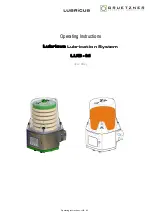
37
When a MIDlet is paused and is registered to receive messages on the port
number of the incoming message, then the user will be queried to launch the
MIDlet.
If the MIDlet is not running and the Java Virtual Machine is not initialized, then a
Push Registry will be used to initialize the Virtual Machine and launch the J2ME
MIDlet. This only applies to trusted, signed MIDlets.
If a message is received and the untrusted unsigned application and the KVM
are not running then the message will be discarded.
There is a SMS Access setting in the Java Settings menu option on the handset
that allows the user to specify when and how often to ask for authorization.
Before the connection is made from the MIDlet, the options available are:
o
Always ask for user authorization
o
Ask once per application
o
Never Ask
The table 7 is a list of Messaging features/classes supported in the device.
Feature/Class
Implementation
JSR-120 API. Specifically, APIs defined in the
javax.wireless.messaging package will be implemented with regards to
the GSM SMS Adaptor
Supported
Removal of SMS messages
Supported
Terminated SMS removal – any user prompts handled by MIDlet
Supported
Originated SMS removal – any user prompts handled by MIDlet
Supported
All fields, methods, and inherited methods for the Connector Class in
the javax.microedition.io package
Supported
All methods for the BinaryMessage interface in the
javax.wireless.messaging package
Supported
All methods for the Message interface in the javax.wireless.messaging
package
Supported
All fields, methods, and inherited methods for the MessageConnection
interface in the javax.wireless.messaging package
Supported
Number of MessageConnection instances in the
javax.wireless.messaging package
32 maximum
Number of MessageConnection instances in the
javax.wireless.messaging package
16
All methods for the MessageListener interface in the
javax.wireless.messaging package
Supported
All methods and inherited methods for the TextMessage interface in
the javax.wireless.messaging package
Supported
















































